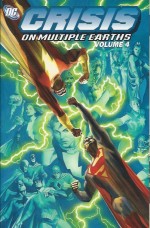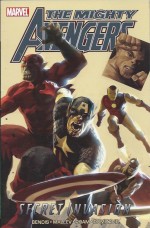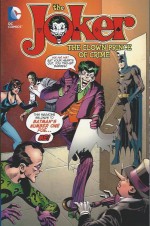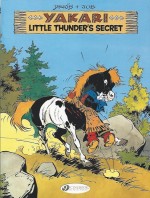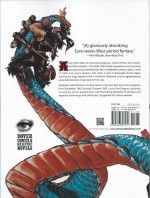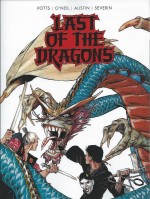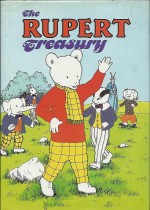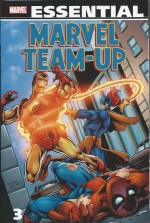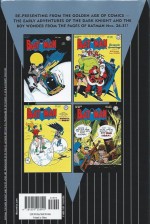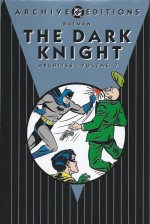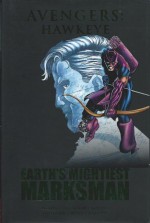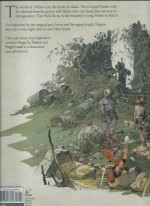
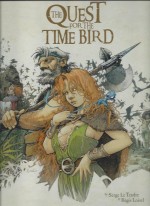
By Serge Le Tendre & Régis Loisel, translated by Ivanka Hahnenberger (Titan Comics)
ISBN 978-1-78276-362-8
Win’s Christmas Gift Recommendation: A Perfect post-Yule Spectacle… 10/10
Like much European art and culture, French language comics (I’m controversially including Belgium and Swiss strips in this half-baked, nigh-racist, incomprehensibly sweeping statement) often seem to be a triumph of style over content.
That doesn’t mean they’re bad – far from it – simply that sometimes the writing and plotting isn’t as important to the creators and readers as the way it looks on a page and in a book, and complex characterisation isn’t always afforded the same amount of room that scenery, players, fighting or sex gets.
When you combine that with their reading public’s total refusal to be shocked by nudity or profanity, it becomes clear why so few of the seventy-odd years of accumulated, beautiful rendered strips ever got translated into English – until now…
Beginning in the mid-1980s and having exhausted most of the all-ages options like Tintin, Asterix, Lucky Luke and Iznogoud, there was a concerted effort to bring a selection of the best mature-targeted European comics to an English-speaking (but primarily American) audience, with mixed results. Happily, that paucity of anglicised action and adventure has been relegated to the dust-bin of history in this century and we’ve all wised up a bit since then.
One of the most beguiling and intriguing of those bande dessinée serials was released by NBM between 1983 and 1987 as a quartet of splendidly fanciful fantasy albums (Ramor’s Conch, The Temple Of Oblivion, The Reige Master and The Egg Of Darkness) under the umbrella title Roxanna and the Quest for the Time Bird.
The eye-catching albums merrily married sword-and sorcery in the manner of Jim Henson’s Dark Crystal with the sly raciness and wry wit of the early Carry On films and the unmatchable imagination of top-rank artists with no artificial restrictions.
Now the entire saga has been retranslated, remastered and re-released in a humongous (246 x 325 mm) full colour hardback packed with pulchritudinous peril, astonishingly exotic locales and a vast variety of alien races all mashed together and killing time until the end of the world…
That imminently endangered orb is the eccentric realm of Akbar; first glimpsed in French as La Quête de l’oiseau du temps: intégrale cycle principal by writer Serge Le Tendre (Les Voyages de Takuan, Mister George, TaDuc) & Régis Loisel (Peter Pan, La Dernière Goutte, Le Grand Mort, Magasin General). However, before that there was also a pithy prototype version crafted by the collaborators in 1975 for the magazine Imagine and that’s been included in this splendid compilation in all its stark monochrome glory – but only in the original French so keep your phrase book or translation App handy…
The mystique and mystery open with Ramor’s Conch which introduces us to a land of many cultures, creatures and magics as the astonishingly adept and confidant Pelisse (restored to her original Gallic appellation) struggles through hostile territory to reach and recruit Bragon, the Greatest Knight in the World (and quite possibly her father) to capture the mystically mythic Time-Bird.
Opting to ignore the obviously still sore subject of the affair between the aged warrior and her mother, Pelisse wants to concentrate on preventing the destruction of the planet at the hands of a legendary mad god imprisoned within the Conch. The dark deity is prophesied to escape millennia of imprisonment in nine days’ time but there is still one chance to save everything…
Old, crotchety Bragon takes a lot of persuading, even though he once loved Pelisse’s mother. Sorceress-Princess Mara is the only chance of holding back onrushing Armageddon. She has a spell from an ancient book that will rebind Ramor but it will take more than nine days to enact. What she now needs is more time and if she can use the fantastic fowl to mystically extend her deadline all Akbar will be saved. But someone has to fetch it for her…
Of course the noble knight eventually acquiesces, but is utterly unable to prevent the annoying teenager from accompanying him. Whether it’s because she may be his daughter or simply because this rather plain-faced lass has the sexiest body on the planet and the mind of a young girl (which here translates as a devastating blend of ingénue maiden and tart-in-training) and not one whit of a sense of self-preservation he can’t decide…
Despite and not because of her constant cajoling, he “decides†to keep her with him as they set out on their desperate quest, the first step of which is to steal the Conch itself from a teeming desert city of lusty religious maniacs who haven’t even seen a woman in months.
After much derring-do and snide asides they succeed, acquiring a breast-obsessed (Pelisse’s chest is unfeasibly large and inviting and heaves most distractingly according to almost everyone she meets), inept young warrior in the process. Even though he’s clearly hopeless, Pelisse has formed a peculiar romantic attachment to him – but only as long as he never shows his face and remains an object of enticing, enigmatic mystery…
Bragon too is keeping a very close eye on him and their surroundings as they have also attracted a relentless stalker in the burly shape of deadly Bulrog – a former squire and pupil of the old knight – employed by fanatical cultists to ensure Ramor is liberated…
Second chapter The Temple of Oblivion sees a rather fraught reunion between Bragon and Mara as the knight deposits the painfully-recovered Conch and takes a party to the aforementioned temple to translate runic clues which will lead to the location of the Time-Bird.
With the chronal creature safely in custody they can literally stop the clock until Mara can re-confine the nearly-free mad god, but the arduous trek pushes the questers to their emotional and physical limits and a dark edge creeps into the tale as they again succeed, but only at the cost of their latest companion.
Sorely troubled, Bragon, Pelisse and her masked warrior head to their next destination, with only seven days remaining…
Riga finds them slogging through jungles strikingly similar to French Indo-China, gradually nearing their goal but unknowingly stalked by weird vulture-like beings. The scabrous, rapacious beast-beings are led by a puissant warrior of indeterminate vintage who has honed his phenomenal combat skills for decades, becoming an obsessive hunter, dedicated to dealing out death as a spiritual experience.
Over the course of four days much is revealed about Bragon and Bulrog – now a (dis)trusted member of the team – and confirmation comes that everything is not as it seems with the irresistible and so-off-limits Pelisse or her far-distant, ever-more impatient mother.
Most worrisome is the fact that a strange magical trickster dubbed Fol of Dol has attached himself to the party, frustrating everybody with tantalising clues and erratically endangering all their lives whenever the whim takes him…
Of course there is an unspoken connection between the deadly butcher Riga and Bragon and their ultimate confrontation is shocking and final. Then, without ever feeling like the creators are treading water, the chapter closes with three days to doomsday, our weary pilgrims uncomfortably united and the path to the Time-Bird wide open before them…
The Egg of Darkness plays hob with synchronicity and chronology, opening many years after the events of the previous chapters, with an old man relating the adventures as a bedtime story for his grandchildren. The fantastic action is overtaken by a metaphysical detour and explosive revelations about the quest and participants which provide a spectacular shock-ending. As with all great myth tales the heroes triumph and fade but still leave something for imagination to chew at, as well as wiggle-room for a return…
You’ll be delighted to learn – I know I was – that Le Tendre & Loisel did indeed periodically revive their amazing creations and hopefully we’ll be seeing those sagas very soon…
Although plotted with austere, even spartan simplicity and a dearth of subtext, the stylish worldliness of Loisel and Le Tendre in the sparse and evocative script, the frankly phenomenal illustration and sheer inventiveness of the locales of astonishing Akbar are irresistible lures into a special world of reading magic that every comics lover and fantasy fanatic should experience.
It’s not Tintin, it’s not Asterix, it is foreign and it is very good.
Go questing for it.
© DARGAUD 2011 by Le Tendre, Loisel.
Quest for the Time-Bird is available in selected shops now and available to pre-order for a December 29th 2015 internet release.

